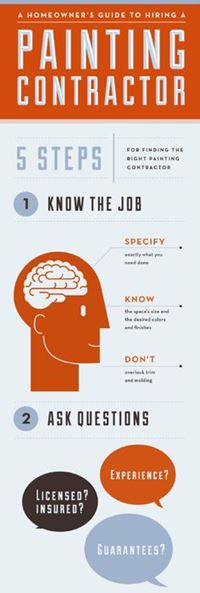Key Seasonal Considerations For Commercial Outside Paint: What You Need To Be Informed Concerning
Key Seasonal Considerations For Commercial Outside Paint: What You Need To Be Informed Concerning
Blog Article
Article Created By-Ford Urquhart
When you're intending a business external paint project, seasonal elements can make or damage your results. You'll want to think about exactly how temperature level and humidity effect paint application and drying out times. Choosing the best season can ensure your paint sticks appropriately and lasts longer. However which periods are really the best for this sort of job? Let's discover the key elements that can impact your task's success.
The Impact of Temperature Level on Paint Application
When you're preparing a business outside painting project, the temperature level can considerably influence exactly how well the paint adheres and dries.
Ideally, you intend to repaint when temperatures range between 50 ° F and 85 ° F. If can you paint the ceiling and walls the same color 's also cool, the paint may not treat properly, bring about concerns like peeling or breaking.
On the flip side, if it's also hot, the paint can dry also swiftly, stopping appropriate attachment and causing an uneven surface.
You must likewise take into consideration the time of day; early morning or late afternoon offers cooler temperatures, which can be extra beneficial.
Constantly check the manufacturer's referrals for the certain paint you're making use of, as they frequently offer guidance on the optimal temperature variety for ideal outcomes.
Humidity and Its Result on Drying Times
Temperature level isn't the only ecological element that affects your commercial outside painting task; moisture plays a considerable role as well. High moisture levels can slow down drying times considerably, impacting the total top quality of your paint task.
When the air is filled with wetness, the paint takes longer to cure, which can cause concerns like bad bond and a higher threat of mold development. If you're repainting on an especially moist day, be gotten ready for extensive wait times in between layers.
It's critical to keep an eye on regional climate condition and strategy as necessary. Preferably, mouse click the next webpage for humidity levels in between 40% and 70% for ideal drying out.
Keeping these factors in mind ensures your task stays on track and delivers a long-term finish.
Best Seasons for Commercial Outside Painting Projects
What's the best season for your commercial external painting tasks?
Spring and early loss are typically your best bets. Throughout these seasons, temperature levels are light, and humidity levels are typically lower, developing perfect problems for paint application and drying out.
Stay clear of summer season's intense heat, which can trigger paint to dry as well promptly, resulting in inadequate attachment and finish. Similarly, winter's chilly temperatures can prevent appropriate drying out and treating, running the risk of the durability of your paint job.
Go for days with temperature levels between 50 ° F and 85 ° F for optimum outcomes. Keep in mind to check the neighborhood weather forecast for rain, as wet conditions can destroy your job.
Preparation around these elements guarantees your painting task runs smoothly and lasts longer.
Conclusion
Finally, preparing your industrial exterior paint projects around seasonal factors to consider can make a significant difference in the result. By scheduling job throughout the ideal temperatures and humidity levels, you'll ensure better attachment and drying out times. Keep in mind to keep an eye on regional weather prediction and pick the right time of year-- spring and very early autumn are your best options. Taking these steps will help you attain a resilient and specialist coating that lasts.
